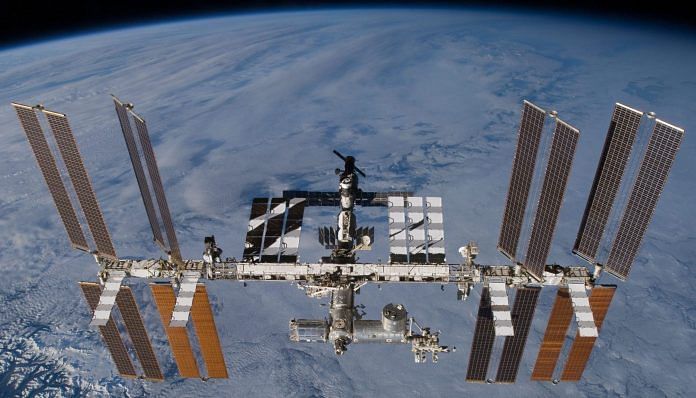New Delhi: Scientists from Japan have found that a certain type of bacteria can survive the harsh conditions of outer space, suggesting that microscopic life forms can migrate to other planets on their own.
Researchers have previously found that the Deinococcus bacteria can float 12 km above the Earth. These bacteria are known to form colonies larger than 1 mm and are highly resistant to environmental hazards like UV radiation.
The team tested the survival of the microbe in space by placing dried aggregates of it in aluminium plates that were put inside exposure panels outside of the International Space Station (ISS). After three years, the team found that all aggregates bigger than 0.5 mm partially survived in space conditions. The bacteria at the surface of the aggregate died and created a protective layer for the microbes beneath, ensuring the survival of the colony.
The findings lend support to a theory called “panspermia”, which proposes that it is possible for microorganisms to travel through space, land on another planet and even multiply. More on CNN.
AI system helps discover 50 new planets
For the first time, an artificial intelligence algorithm has discovered 50 new planets outside our solar system using data from NASA’s planet-hunting space telescopes.
Usually, scientists as well as amateur astronomers search through huge amounts of data from telescopes for signs of planets passing between the telescope and their star, a process known as transiting.
However, to shift out these false positives, there is a planetary validation process. Astronomers have now used a process based on machine learning to analyse a sample of potential planets and determine which ones are real and which are “fakes”.
The algorithm was trained to recognise real planets using two datasets of confirmed planets and false positives from the Kepler space telescope, which is now decommissioned.
They used the algorithm on a dataset of planetary candidates from Kepler, resulting in 50 newly confirmed planets, which became the first to be validated by machine learning. More on Inverse.
Also read: Scientists in Japan revive microbes buried in rocks over 100 million years ago
Scientists revise the age of Earth’s core
Scientists have revised the estimate of how old the Earth’s solid inner core is, pegging it at about 1 billion to 1.3 billion years. Previous estimates pegged it anywhere between 565 million and 4 billion years.
The team created conditions similar to the centre of Earth by squeezing laser-heated samples of iron between two diamond anvils. The revised age of the inner core correlates with a spike in the strength of the Earth’s magnetic field, which is recorded by the arrangement of magnetic materials in rocks that were formed around this time. More on Live Science.
Fossils reveal oldest evidence of hibernation in vertebrates
Scientists have found the oldest record of hibernation in vertebrate animals, from the remains of a distant relative of mammals that lived in Antarctica some 250 million years ago.
The ancient creature experienced extended periods without sunlight each winter. Its fossils indicate that torpor arose in vertebrates even before mammals and dinosaurs evolved. Torpor is a state in which animals temporarily lower their metabolic rate to get through a tough season.
The animal is part of the genus Lystrosaurus. It appears to have survived the Earth’s largest mass extinction event, which wiped out about 70 per cent of vertebrate species on land.
The stout, four-legged foragers lived another 5 million years, spread across the Earth’s then-single continent which included what is now Antarctica. More on New Atlas.
Study estimates global temperatures during Ice Age
Scientists have estimated the extent to which temperatures dropped during the last Ice Age, which lasted from about 115,000 to 11,000 years ago, when large mammals such as mammoths, woolly rhinos and saber-toothed cats roamed the planet.
The team found that the average global temperature during a period from roughly 23,000 to 19,000 years ago was about 7.8 degrees (Celsius) colder than 2019.
The polar regions were far cooler, with the Arctic region estimated to have been 14 degrees colder than the global average.
Researchers studied tiny fossils of planktons, which undergo changes in response to water temperature. This information was then used to calculate average global temperatures using climate model simulations. More on Reuters.
Also read: 2 IIT Bombay students discovered the asteroid that flew closest to Earth



